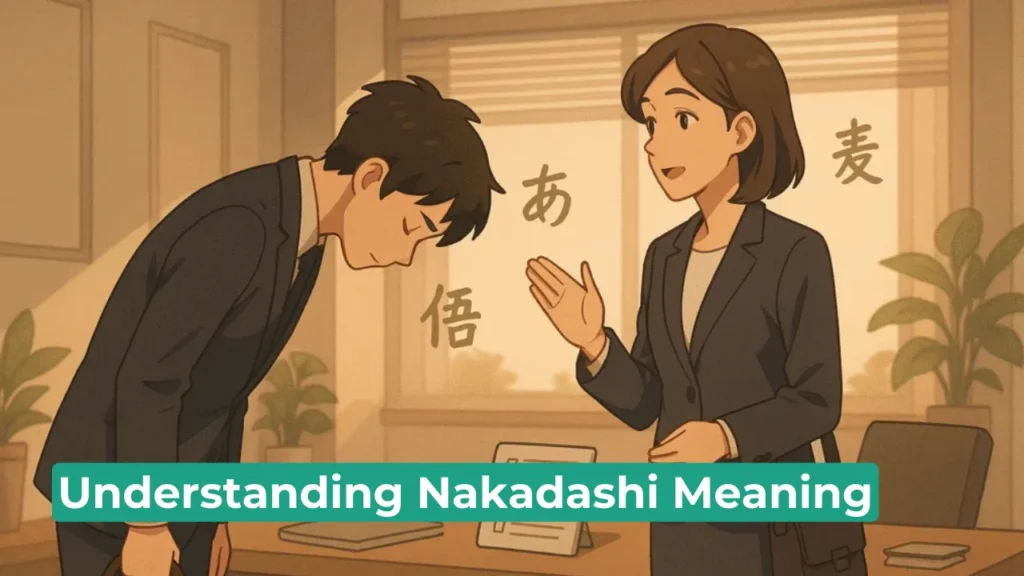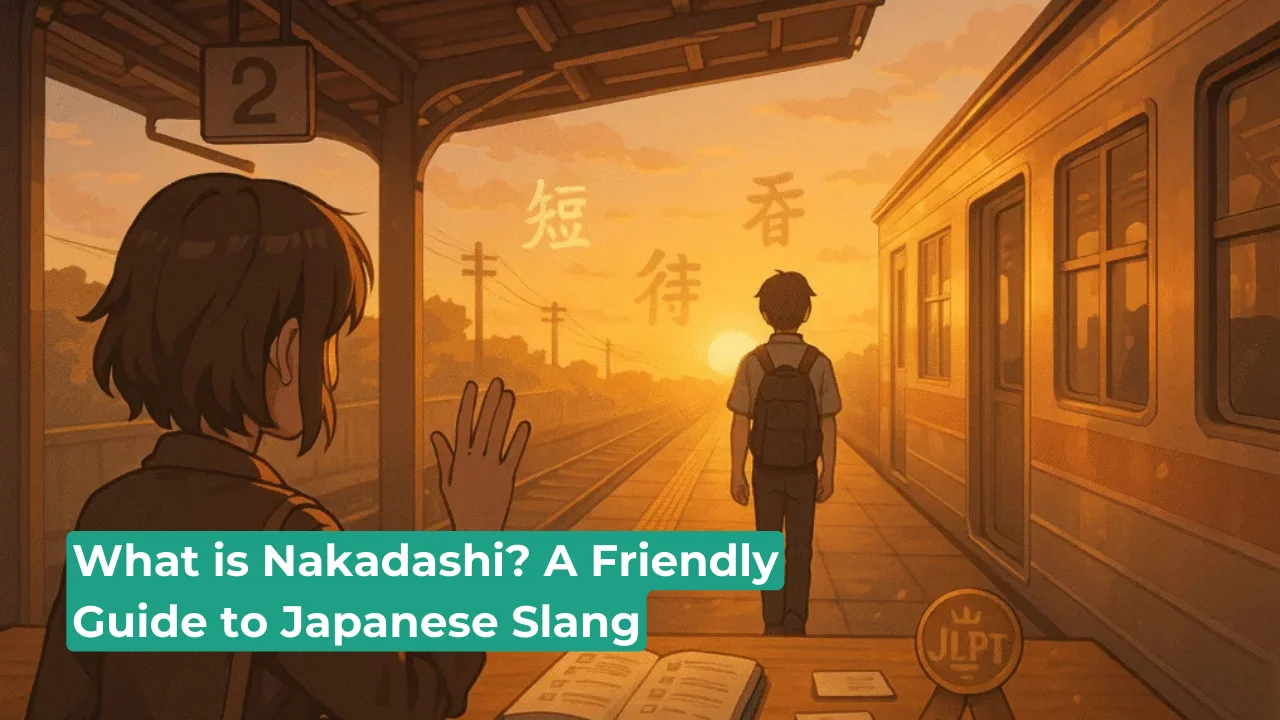Hey there! Ever stumbled across the term “nakadashi” while watching anime, browsing forums, or chatting with friends about Japanese culture? Maybe you raised an eyebrow, wondering what it means and why it’s popping up in certain contexts. Don’t worry—you’re not alone. Japanese slang can feel like a maze, especially when terms like nakadashi, kosei, or JK start flying around. In this guide, I’ll break down what is nakadashi, dive into its cultural context, and explore related Japanese slang like JK and kosei. By the end, you’ll feel like a pro navigating these terms!
This article is your one-stop shop for understanding nakadashi and its place in Japanese pop culture. I’ll keep things friendly, clear, and packed with useful info. Ready to jump in? Let’s go!
Understanding Nakadashi Meaning

The term nakadashi might sound intriguing, but it’s not as mysterious as it seems. Let’s unpack its definition, origins, and how it’s used today. Whether you’re an anime fan or just curious about Japanese slang, this section will clear things up.
Nakadashi Definition
Nakadashi is a Japanese term often tied to adult contexts. It translates roughly to “internal ejaculation” and is commonly used in adult films, manga, and anime. The word combines “naka” (inside) and “dashi” (release). It’s a specific term, so it’s not something you’d hear in everyday conversation.
Origins of Nakadashi
The term comes from Japan’s adult entertainment industry, gaining traction in the 1980s and 1990s. As adult content became more accessible globally, nakadashi entered the lexicon of anime and manga fans. It’s now a niche part of Japanese pop culture slang.
Nakadashi in Media
You might spot nakadashi in hentai (adult anime/manga) or online discussions about adult genres. It’s not a term for casual chats but appears in specific fan communities. For example, forums like Reddit or anime blogs might reference it when discussing certain tropes.
Cultural Sensitivity
Nakadashi is a sensitive term due to its explicit nature. If you’re exploring Japanese culture slang, use it carefully. It’s not a word to toss around at a family dinner or in polite company. Context matters!
Table: Nakadashi vs. Other Japanese Slang Terms
| Term | Meaning | Context | Usage Frequency |
| Nakadashi | Internal ejaculation | Adult media, niche forums | Low, niche |
| JK | High school girl (joshi kosei) | Anime, casual slang | High, mainstream |
| Kosei | Individuality or personality | Everyday, positive contexts | Moderate |
This table compares nakadashi with other slang terms we’ll explore later. It shows how nakadashi is more niche than JK or kosei.
In my experience, diving into Japanese slang feels like learning a secret code. Nakadashi was one of those terms that confused me at first, but understanding its context made it less daunting.
Japanese Slang Explained
Japanese slang is a vibrant part of the language, especially in anime, manga, and online communities. To fully grasp what is nakadashi, you need to understand the broader world of Japanese slang. Let’s explore some key terms and their meanings.
What is Japanese Slang For?
Japanese slang adds flavor to the language. It’s used to express emotions, trends, or subcultural ideas that standard Japanese might not capture. Slang like nakadashi, JK, or kosei reflects Japan’s dynamic pop culture, from anime to social media.
Common Japanese Slang Terms
Beyond nakadashi, terms like “yabai” (awesome or terrible) or “chotto” (a little) are everyday slang. These words shift depending on tone and context. Slang is a shortcut to sounding natural in Japanese.
Slang in Anime Culture
Anime fans love slang. Terms like “tsundere” (tough but soft) or “yandere” (obsessively loving) are slang born from anime tropes. Nakadashi fits into this world but stays in adult niches. Anime slang terms make fan discussions lively and specific.
Why Slang Matters
Slang shows you’re in the know. If you’re chatting about Japanese pop culture on X or Discord, dropping slang like JK or kosei makes you sound like a native fan. It’s a badge of belonging.
Here’s a tip I always give beginners: Start with mainstream slang like JK before tackling niche terms like nakadashi. It’s less overwhelming and more versatile.
What is a JK in Japanese Slang?
You’ve probably heard “JK” tossed around in anime or manga. It’s one of the most popular Japanese slang terms, and it’s way more innocent than nakadashi. Let’s break it down.
JK Meaning
JK stands for “joshi kosei,” meaning “high school girl” in English. It’s used to describe teenage girls, often in a casual or playful way. JK is mainstream, appearing in anime, social media, and even fashion trends.
JK in Pop Culture
JK culture is huge in Japan. Think school uniforms, kawaii (cute) aesthetics, and idol groups. Anime like Sailor Moon or K-On! often feature JK characters. Fans on X might post about “JK vibes” when sharing cute schoolgirl outfits.
JK vs. Nakadashi
Unlike nakadashi, JK is lighthearted and widely accepted. While nakadashi stays in adult circles, JK is a term you could use in casual chats. It’s a great example of Japanese culture slang that’s universally understood.
Misunderstandings to Avoid
Some non-Japanese fans misuse JK, thinking it’s flirty or inappropriate. It’s not! JK simply means a high school girl, so keep it friendly and respectful.
Table: JK Slang in Different Contexts
| Context | JK Usage | Example |
| Anime/Manga | Describes high school girl characters | “She’s such a cool JK protagonist!” |
| Social Media | Refers to fashion or trends | “Loving these JK uniform pics!” |
| Everyday Chat | Casual reference to teen girls | “My sister’s a JK now!” |
This table shows how JK adapts to different settings, unlike the more limited nakadashi.
What is Kosei in English?
Another term you might encounter is kosei. It’s less common than JK but still a gem in Japanese slang. Let’s dive into its meaning and why it matters.
Kosei Definition
Kosei means “individuality” or “personality” in English. It’s a positive term used to praise someone’s unique traits. For example, you might say, “She has strong kosei” to compliment her distinct style.
Kosei in Daily Life
Kosei is common in schools, workplaces, or creative fields. Teachers might encourage students to show their kosei through art or projects. It’s a feel-good word that celebrates being yourself.
Kosei in Anime
Anime characters often embody kosei. Think of quirky protagonists like Luffy from One Piece. Fans might describe them as having “tons of kosei” for their bold personalities. It’s a term that resonates in anime culture terms.
Cultural Importance
In Japan, where group harmony is valued, kosei stands out. It’s about balancing individuality with community. Unlike nakadashi, kosei is a term you can use freely in most settings.
What I learned the hard way is that kosei isn’t just about standing out—it’s about being authentic in a way that respects others. It’s a beautiful concept!
What Does Japanese Mean in English?
You might be wondering how the Japanese language shapes slang like nakadashi, JK, and kosei. Let’s explore the language itself and its role in creating these terms.
Japanese Language Basics
Japanese is a unique language with three writing systems: hiragana, katakana, and kanji. Slang often uses katakana for trendy or foreign words, like JK. Nakadashi, however, uses kanji, reflecting its specific meaning.
Slang’s Role in Japanese
Slang makes Japanese more dynamic. It evolves with trends, especially in Japanese pop culture. Terms like nakadashi emerge from niche subcultures, while JK reflects broader youth culture.
Learning Japanese Slang
Want to sound like a local? Start with a Japanese slang dictionary or apps like Duolingo. Follow anime fan accounts on X for real-time slang updates. You’ll pick up terms like kosei in no time.
Why Japanese Slang is Fun
Slang connects you to Japan’s heart. Whether it’s nakadashi in adult media or JK in cute anime, these words tell stories about culture, trends, and creativity.
Table: Japanese Writing Systems and Slang
| Writing System | Purpose | Slang Example | Usage |
| Hiragana | Basic phonetic script | Yabai | Everyday slang |
| Katakana | Foreign words, trendy slang | JK | Youth culture, anime |
| Kanji | Complex meanings, specific terms | Nakadashi | Niche, adult contexts |
This table shows how Japanese writing systems shape slang, including nakadashi.
Actionable Tips for Learning Japanese Slang
Ready to master Japanese slang like nakadashi, JK, and kosei? Here are five actionable tips to get you started. These strategies are practical and beginner-friendly.
- Watch Anime with Subtitles: Anime is a goldmine for slang. Watch shows like My Teen Romantic Comedy SNAFU with subtitles to catch terms like JK or yabai in context.
- Join Online Communities: Platforms like X or Reddit have anime and Japanese culture groups. Engage in discussions to learn slang like kosei naturally.
- Use a Slang Dictionary: Apps like Jisho or online dictionaries list slang with examples. Look up nakadashi or JK to understand their nuances.
- Practice with Native Speakers: Apps like Tandem connect you with Japanese speakers. Ask them about slang trends to sound authentic.
- Follow Japanese Social Media: Influencers on Instagram or TikTok often use slang. Search hashtags like #JK or #JapaneseCulture to stay updated.
These tips will help you navigate Japanese slang for beginners with confidence.
FAQs About Nakadashi and Japanese Slang
Got questions? Here are answers to common queries about what is nakadashi and related slang, inspired by Google’s “People Also Ask” and “Related Searches.”
What does nakadashi mean in Japanese?
Nakadashi means “internal ejaculation” and is used in adult media like hentai or films. It’s a niche term, so use it carefully in appropriate contexts.
Is nakadashi common in everyday Japanese?
No, nakadashi is specific to adult content. You won’t hear it in casual chats or mainstream media. Stick to terms like JK for everyday use.
What is JK slang in anime?
JK means “joshi kosei” or “high school girl.” It’s a popular term in anime, manga, and social media, describing teen girls or their aesthetic.
What does kosei mean in English?
Kosei translates to “individuality” or “personality.” It’s a positive term used to praise someone’s unique traits in school, work, or anime.
How do I learn Japanese slang?
Watch anime, join online forums, and use apps like Jisho. Follow Japanese influencers on X or TikTok to catch trending slang like JK or kosei.
Why is Japanese slang important?
Slang helps you connect with Japanese culture, especially in anime and pop culture. It makes you sound natural and shows you understand trends.
Also Read: 42 Dugg Height: How Tall Is the Detroit Rapper?
Conclusion
So, what is nakadashi? It’s a niche Japanese slang term meaning “internal ejaculation,” tied to adult media like hentai. Unlike mainstream slang like JK (high school girl) or kosei (individuality), nakadashi is specific and sensitive. By exploring these terms, you’ve peeked into the colorful world of Japanese slang. From anime tropes to cultural nuances, slang like this brings Japan’s pop culture to life.
Whether you’re an anime fan or a language nerd, learning slang is a fun way to deepen your connection to Japan. Use the tips above, stay curious, and keep exploring. You’ve got this!

Florence Jones is a versatile writer covering tech and business. Her insightful articles offer clarity and depth, making complex topics accessible to a wide audience.

